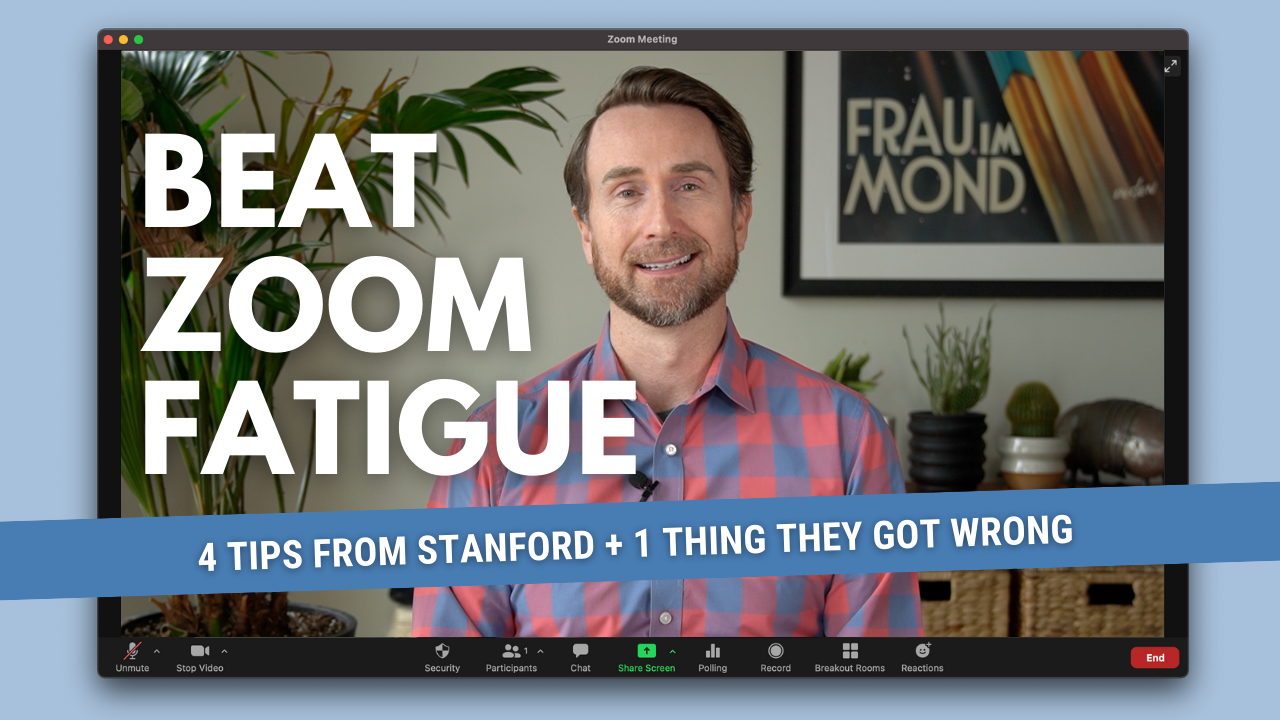Stanford professor Jeremy Bailenson led a large-scale study and found ways how we can finally prevent the dreaded Zoom fatigue.

Let’s dive in.
1. Shrink your Zoom screen
When you’re having a conversation on Zoom with one person or many, our brains process it as direct eye contact. The way you see faces on Zoom, everyone looking at you can be intense for us as humans, neurologically speaking.
And this intense feeling can trigger your fight or flight response.
It can increase your heart rate and breathing, so you’re exerting more energy and feel tired quicker.
Shrinking your Zoom window a bit can help mitigate that.

2. Use the “hide Self View” feature
There are two reasons for that.
One is that research suggests that people who look in a mirror a lot during the day tend to score lower on psychological wellness.
The second reason has to do with the spotlight effect (discussed here). When we see ourselves, we tend to see our flaws first. And when we see those flaws, we amplify them in ways that we wouldn’t do with others.
We’re overly self-critical and often harsh on ourselves. But as soon as you hide your self-view, you don’t see yourself and therefore won’t criticize the way you look, circumventing the negative feeling that can come from that.

3. Use an adjustable setup
If you’ve been sitting and working on a desk for a while, then you know it’s a good idea to regularly get up and walk around.
With an adjustable setup, you can back up a little bit, even stand up and pace around. You can move and still be within the frame and stay engaged.
This helps support your bloodflow, keeps you healthier, and reduces fatigue.
4. Go “audio only”
This not only means turning your camera off for a but also getting up and walk around, so you’re not even looking at the screen.
That way, you’ll give your brain a break. And that breathing room can help minimize fatigue.
What Stanford missed: Facilitation skills
So here’s what I think Stanford got wrong: Don Norman is a legendary product designer.

He talks about how when someone is having a problem using a product, the user tends to blame themselves.
What Don is saying is that’s actually a failure of the product designer (the person who designed the product). They should have spent more time, energy, and research on creating an easier user experience, so people don’t feel that frustration and blame themselves.
Now, what does this have to do with Zoom?
Well, there’s always a person running the Zoom session: the facilitator.
And that person owns the agenda. It’s their responsibility to make sure people don’t get Zoom fatigue. There are a lot of straightforward ways to accomplish this.
For example:
- Make the material more dynamic and engaging
- Give people a break, so they can get up and walk around and turn the camera off for a bit
- Alternate between different states (like Q&A, solo work, breakout rooms). Wes Kao’s State Change method nails this.
Facilitating is a skill anyone can develop. So start working on it!
Video version of this article:
One great place to become a better facilitator is to learn camera confidence: Here’s a link to a free 14-day Camera Confidence Challenge if you want to become more comfortable on camera.
